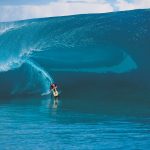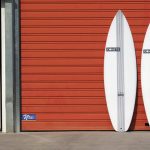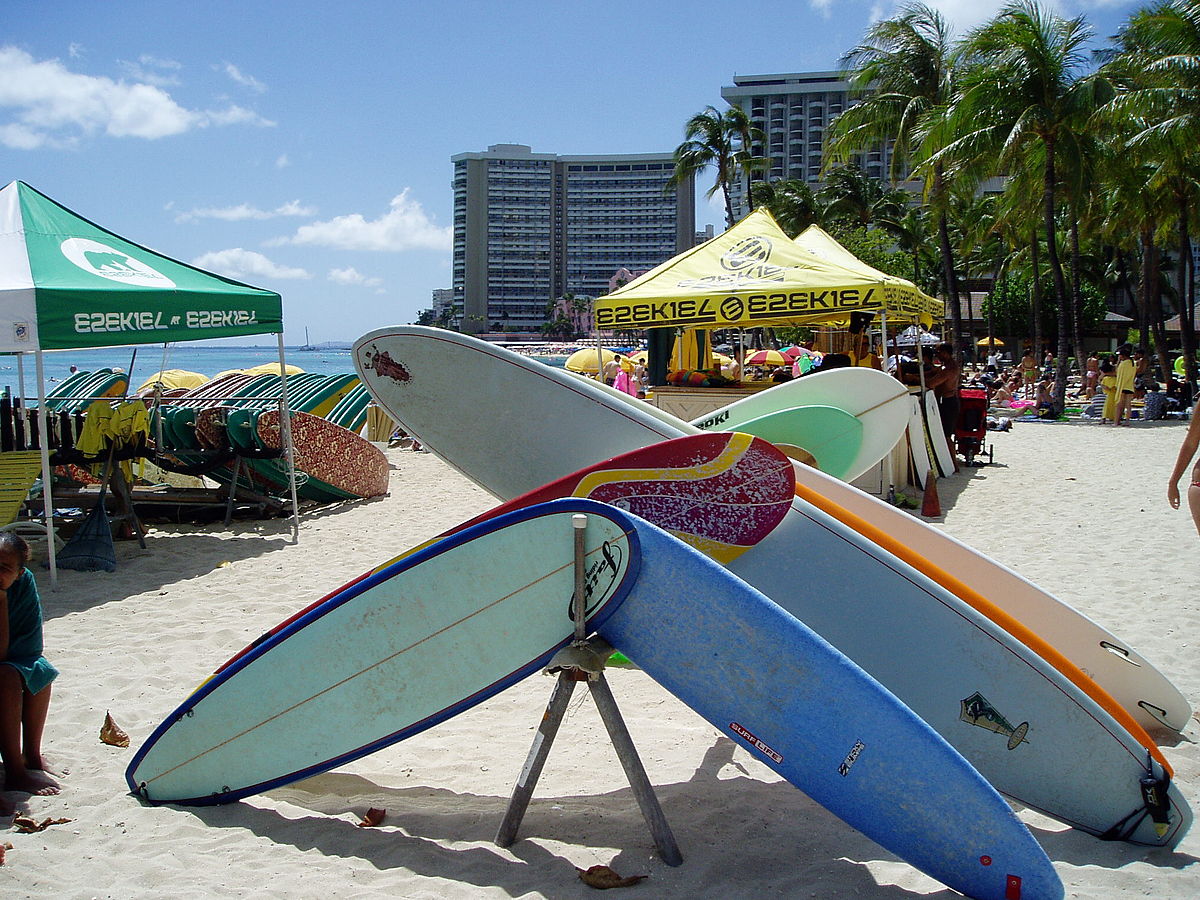Since the idea of a perfect surfboard design is rather an action in progress than a still-life image, its further improvement depends greatly on what kind of surfboard you’d choose to ride on, a polystyrene one or still a polyurethane core surfboard.
And since making decisions in your search for the flawless surfboard is going to be dramatic because of numerous particularities of each of the composite materials and different ideas, we consider offering you some assistance and new ideas.
With the aim to help you gather useful facts, news, and ideas in the surfing industry, we visited a recent Surfboard Expo to grasp the latest ideas on polyurethane and polystyrene foams.
When Gordon Clark closed his business in December 2005, it initiated a rush in searching ideas for other technologies than Clark’s polyurethane foam formula.
It was not because his foam recipe was refused. It was due to Clark’s enormous share in the world surfboard blanks market which had to be rapidly made up for.
The industry had to do thorough research in substitution for polymers and resins. And the research led to some ideas on polystyrene and epoxies as new materials for manufacturing surfboards.
Table of Contents
Weight Factor
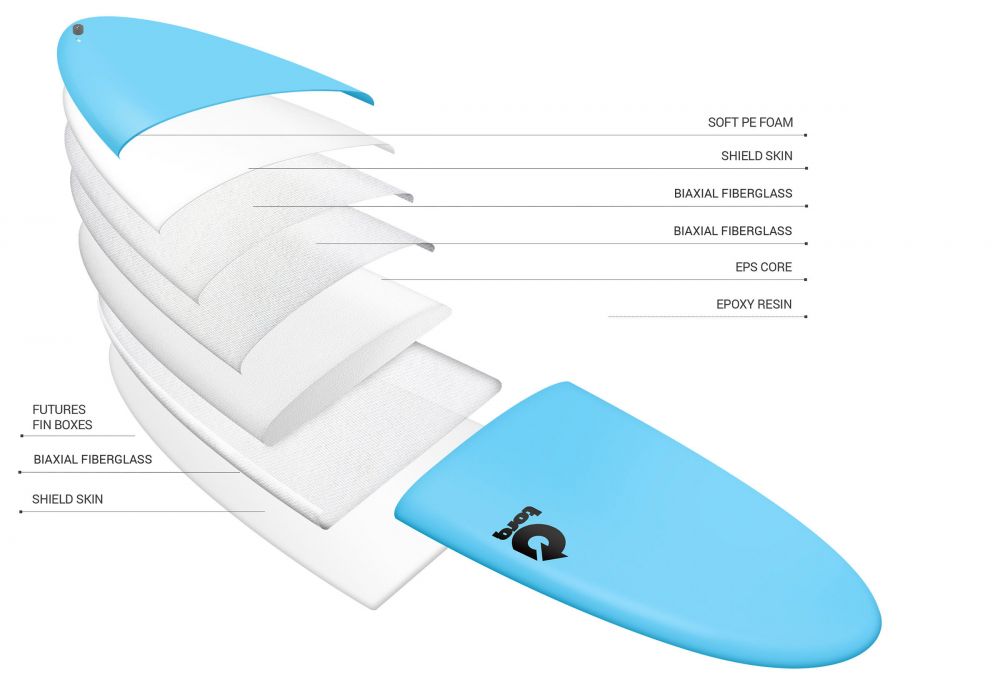
So, the new idea of EPS core and epoxy glassing fell into fertile soil, and quite a number of manufacturers started to saturate the market with ideas of surprisingly light surfboards, at that, not so toxic as those surfboards produced from polyurethane.
According to Robert Hyland of Surftech, while each cubic foot of a regular polyurethane foam weighs three pounds, a cubic foot of EPS foam weighs only one pound.
So, it’s an obvious fact, the PU foam surfboard is three times heavier than a surfboard made of polystyrene.
Water Absorbency

The gravest flaw inherent in polystyrene foam blanks in past years was high water absorbency.
The problem is that this foam material consists of myriads of tiny styrene globules clumped together.
Sometimes they are squeezed not tightly enough to become water-resistant. There remains space for water to penetrate.
So, this issue has been dealt with in a few recent years due to some interesting ideas, and the result showed the efforts were not in vain.
This is how Robert Hyland describes the new approaches and ideas in the process of EPS blanks production: the foam is injected into a pressurized mold, and due to high pressure and temperature, the foam bulbs get fused.
They are compressed so tightly that there are no gaps left in between. This idea prevents the water from penetrating inside the core.
Consequently, fused EPS blanks used for Ultraflex surfboard production are distinguished for their almost complete water impermeability after using these ideas of manufacturing.
High Firmness and Low Toxicity

As it has already been mentioned above, polystyrene releases very few volatile organic substances.
For this environmental reason and due to its high water impermeability, Fletcher Chouinard, the one who builds surfboards for Patagonia, prefers the idea of using extruded polystyrene foam for his surfboards.
XTR’s excellent cell structure is the reason why Roy Coffman of the Patagonia surfboard store prefers the idea to work with polystyrene foam as well.
He praises XTR foam blanks for their incomparably small weight and high density.
Technically, it is the extreme lightness of foam that allows a shaper to coat the blank with the idea of an additional layer of epoxy which gives it even greater strength.
Some Facts and Ideas in Favor of Polyurethane Foam
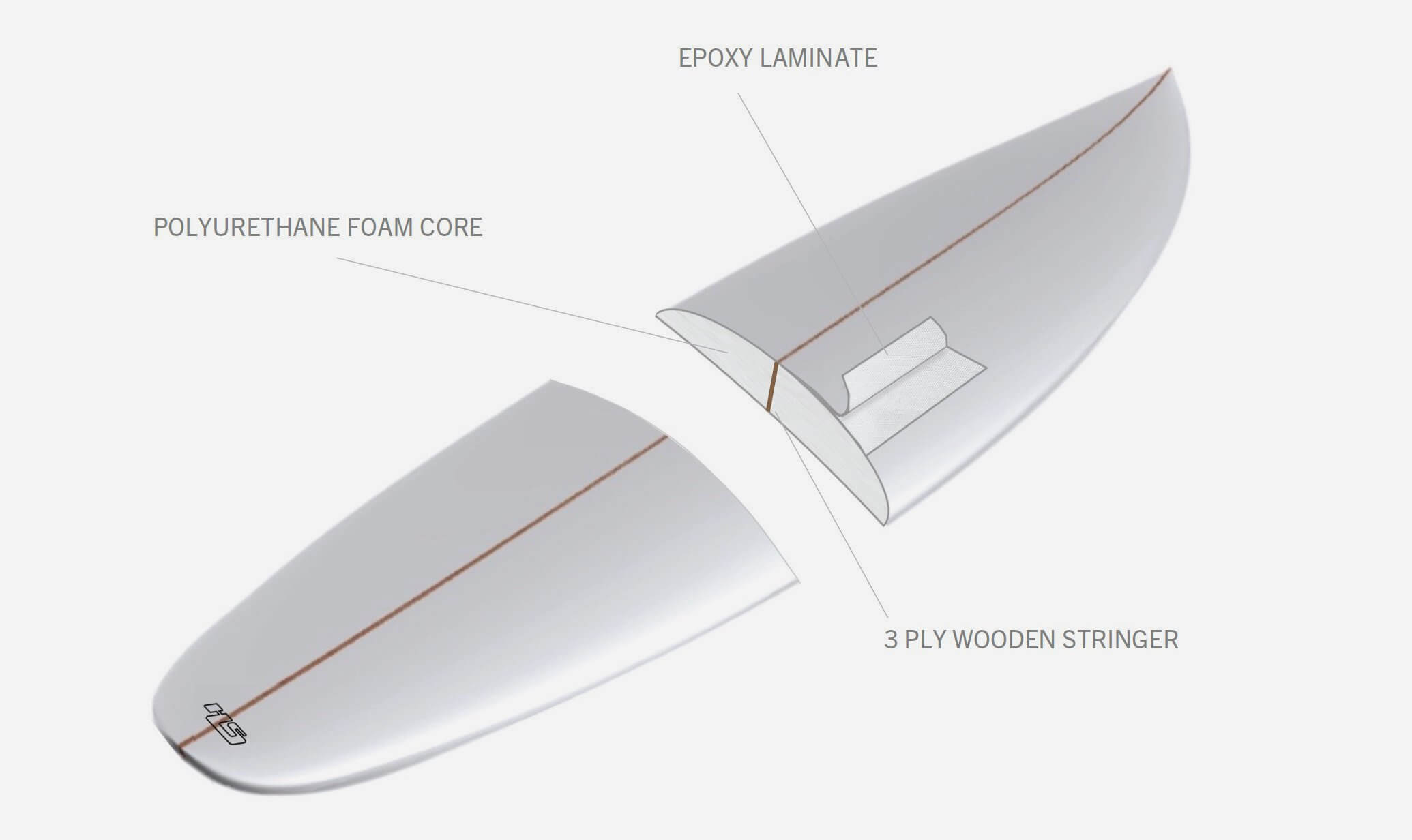
There was a time in the community of surfboard shapers and riders that everybody involved seemed to be of the common opinion that the era of expanded polystyrene foam had come and would stay forever.
But then it turned out that the unity of opinions and ideas was not at all so universal. Legendary Tim Bessell shared his ideas of the subject, and it came out that he was not a fan of EPS foam surfboards and had stopped shaping Styrofoam long before.
He pointed at quite a few shortcomings of polystyrene foam, some of them being grave enough.
The issue with extruded polystyrene is that it does not stand the temperature above 140. If it is higher, the foam starts losing gas and the foam structure destroys.
Expanded polystyrene for surfboards does not stand up criticism when it comes to its absorbency properties. Crack your EPS surfboard and it starts sucking water like a thirsty camel.
Bessell thinks the reason is the round shape of polystyrene granules. The idea is that they can’t be compressed tightly enough to resist water.
He believes there is nothing better than old good PU foam. Although this foam is somewhat heavier than polystyrene, the foam weight to the firmness ratio matches the most boasted EPS blanks perfectly.
In Bessell’s opinion, another serious flow of the idea with polystyrene is its toxicity.
He is convinced that EPS foam is bad for human health and the body. He is personally acquainted with many shapers who had to quit the surfboard industry because of grave allergy to styrene.
Conclusion
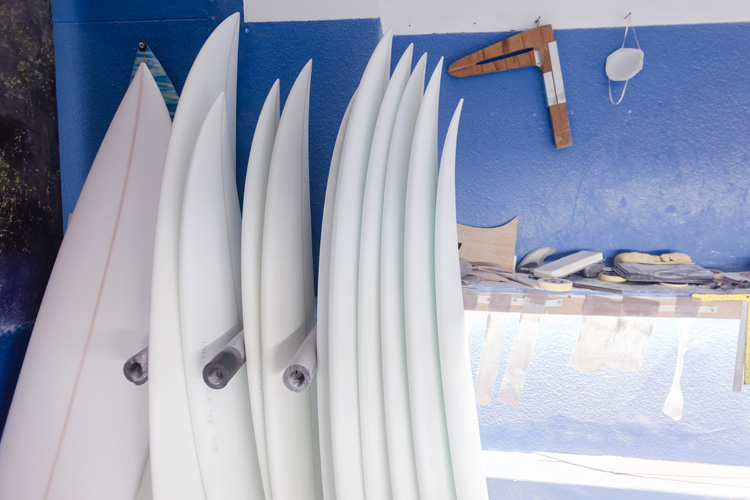
Now, let us summarize the expressed opinions, viewpoints, and ideas on surfboards.
The experts radically diverge in their judgments and ideas on the matter, which is quite natural.
Since the surfboard materials have different properties, the inherent advantages and flaws also differ.
Surfboard builders have been blowing PU blanks for half the century now, and polyurethane surfboards are still great as to their strength and performance, but something has to be done to diminish their toxicity.
Both extruded and expanded polystyrene foams are not much safer as to toxicity, and they are not resistant enough to water penetration.
Anyway, PSE blanks are three times lighter than PU blanks.
So, questions are asked and they deserve clear answers. The experts have done their best to put forward new ideas, now you are welcome to make up your mind.

